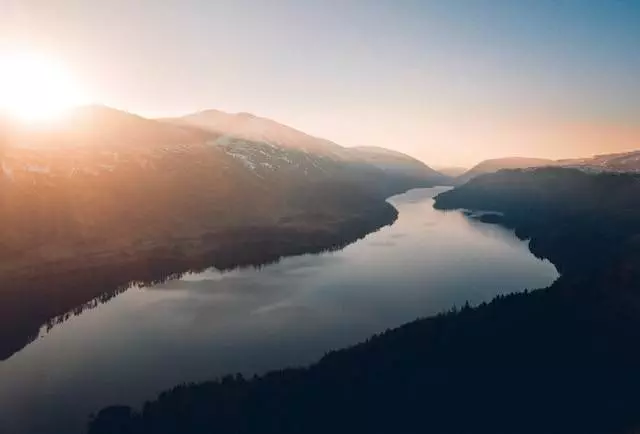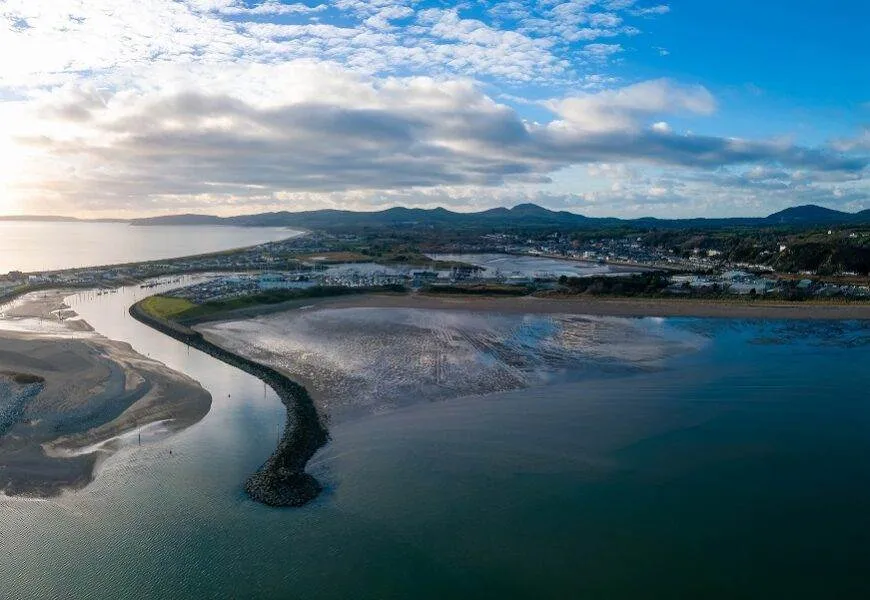Introduction – Natural Resources Wales River Levels
The Significance of River Levels
The health of our rivers and the environment around them is largely determined by the levels of the rivers. They can likewise essentially affect human exercises, like flooding, farming, and entertainment.
Role of Natural Resources Wales
Natural Resources Wales (NRW), the Welsh government agency responsible for overseeing natural resource management in Wales, oversees river levels and takes measures to limit flooding impacts.
Why Understanding River Levels Matters
Understanding river levels is important for a number of reasons:
- To predict and prevent flooding
- To manage water resources
- To protect ecosystems
- To inform planning decisions
- To support recreation and tourism
Factors Influencing River Levels
A number of factors can influence river levels, including:
- Precipitation patterns: Rainfall and snowmelt are the main sources of water for rivers.
- Seasonal changes: River levels typically peak in the winter and spring, when there is more precipitation.
- Topography and geography: The shape of the land and the presence of dams and reservoirs can also affect river levels.
- Human activities: Human activities, such as agriculture and deforestation, can also alter river levels.

Monitoring River Levels
NRW monitors river levels at over 1,000 stations across Wales. This data is used to predict flooding, manage water resources, and protect ecosystems.
Real-time Data Collection
NRW collects river level data in real time using a variety of methods, including:
- Hydrometric gauges: These devices measure the height of the water level in a river.
- Radar: Radar can be utilized to gauge how much precipitation in a space.
- Satellites: River and lake water levels can be measured with satellites.
NRW Monitoring Stations
NRW has monitoring stations located at strategic points throughout Wales. These stations are equipped with hydrometric gauges and other sensors that collect data on river levels, rainfall, and other environmental factors.
Technological Advancements
River level monitoring’s accuracy and effectiveness are being enhanced by new technologies. For instance, robots can be utilized to overview waterway conditions, and man-made brainpower can be utilized to examine information and recognize expected issues.
Data Accessibility and Interpretation
River level data are accessible to the general public via NRW’s website and other channels. Individuals, businesses, and organizations can use this data to make well-informed decisions about river management and flood risk.
The Impact on Ecosystems
The levels of rivers can have a big effect on aquatic ecosystems. Wetland depletion and the loss of fish and other aquatic life can result from low river levels. Flooding, which can harm riverbanks and destroy habitats, can be caused by high river levels.
Aquatic Life and Habitats
Stream levels can have an enormous effect on oceanic life. Low river levels may reduce oxygen levels in the water, which could kill fish and other marine animals, while destruction caused by high river levels could also result in their displacement or even their demise.
Riparian Zones and Biodiversity
Riparian zones are the areas of land that border rivers. There are various reasons for their importance, including:
- A wide range of animals and plants can use them as homes.
- Filters assist in filtering pollutants out of the water supply.
- They help to stabilize riverbanks and prevent erosion.
High river levels can damage riparian zones, which can have a negative impact on biodiversity.
Water Quality and Health – Natural Resources Wales River Levels
Water quality can also be affected by swash situations. High swash situations can flush adulterants downstream, while lower swash situations may increase their attention in the water.
Water quality is of utmost significance for mortal health; diarrhea, nausea and vomiting are just some of the health goods associated with drinking weakened water.
Human Interaction and River Levels
River levels can also be significantly affected by human activities. The absolute most well known ways that people associate with waterways include:
Agribusiness:
Waterway levels can be changed by deforestation and water system. Irrigation can raise river levels by taking water from lakes and rivers, whereas deforestation can lower river levels by reducing the amount of water absorbed by the soil.
Development in the city:
River levels can also be affected by urban development. Paving streets and sidewalks can increase runoff and cause flooding, while the construction of dams and reservoirs can store water and prevent it from flowing downstream.
Entertainment:
River levels can also be affected by recreational activities like boating and fishing. Drifting can work up silt and dirty the water, while fishing can eliminate fish from the biological system.
Changes in the climate:
River levels are also expected to be significantly affected by climate change. As temperatures increase, more evaporation should increase and bring about lower river levels. Furthermore, extreme weather events such as storms and droughts could occur more frequently, further impacting river levels.
Human activities can have a positive or negative effect on river levels. Dams and reservoirs, for instance, can aid in flood control and supply water for irrigation, while deforestation can lessen flooding and enhance water quality. However, in order to avoid harming river ecosystems, it is essential to carefully manage human activities.
Here are some specific examples of how human activities have impacted river levels in Wales:
- As temperatures warm, evaporation rates should rise, which could lower river levels. Furthermore, more extreme weather events like storms and droughts may take place more frequently, potentially impacting river levels even further.
- In the 1980s, more flooding occurred as a result of the Dee Valley’s deforestation in North Wales. The deforestation decreased how much water that was consumed by the dirt, which made the stream flood its banks all the more oftentimes.
- River levels in Wales have been fluctuating more recently as a result of climate change. It has become more challenging as a result to forecast flooding and manage water resources.
It is essential to be aware of how human activities affect river levels and to take measures to lessen these effects. This should be possible by overseeing land use, creating feasible water the board rehearses, and adjusting to environmental change.
Conclusion – Natural Resources Wales River Levels
Waterway levels are an intricate issue that is impacted by different elements. We can better manage river resources and safeguard our ecosystems by comprehending these factors.
Here are a few critical focus points from this segment:
- Flooding: Stream levels are a vital mark of the gamble of flooding. Droughts can be triggered by low river levels, while flooding can be triggered by high river levels. Property, infrastructure, and ecosystems can be damaged by flooding.
- Water resources: The levels of rivers are also crucial to water resources. Water is essential to industries, agriculture, and human health – but the amount available to each of these areas may depend on river levels.
- Ecosystems: The levels of rivers are also crucial to ecosystems. Streams give environment to different plants and creatures. Low stream levels can harm stream biological systems, while high stream levels can contaminate the water.
- Recreation: Recreation can also be affected by river levels. River levels can have a huge effect on popular activities such as boating, fishing and swimming. At low river levels these activities may become difficult or impossible; at higher river levels there may be risk involved that could make participation hazardous or impossible altogether.
Human activities:
Human activities can have a significant impact on river levels. Some of the most common ways that humans interact with rivers include:
- Agribusiness River situations can be changed by deforestation and irrigation. Deforestation can lower swash situations by reducing the quantum of water that’s absorbed by the soil, whereas irrigation can raise swash situations by taking water from lakes and gutters.
- Development in the city: River levels can also be affected by urban development. Paving streets and sidewalks can increase runoff and cause flooding, while the construction of dams and reservoirs can store water and prevent it from flowing downstream.
- Entertainment: River levels can also be affected by recreational activities like boating and fishing. Drifting can work up silt and dirty the water, while fishing can eliminate fish from the biological system.
- Changes in Climate River situations are expected to be significantly impacted by climate change. As temperatures increase, further evaporation could decrease swash situations; also, extreme rainfall events like storms and famines may become more current, having farther counteraccusations on swash situations.
Trying to reduce the effects of human activity:
Human activities can have a positive or negative effect on river levels. Dams and reservoirs, for instance, can aid in flood control and supply water for irrigation, while deforestation can lessen flooding and enhance water quality. However, in order to avoid harming river ecosystems, it is essential to carefully manage human activities.
The following are a few options for mitigating the effects of human activity on river levels:
- Responsive land use: Planning for land use can help mitigate the effects of urbanization and agriculture on river levels. Zoning, for instance, can be used to safeguard wetlands and riparian areas.
- Conserving water: Water conservation can help reduce irrigation requirements and the demand for water. Fixing leaks and using water-efficient appliances and fixtures are two ways to accomplish this.
- Management of stormwater: Water quality can be improved and flooding can be reduced with stormwater management. By constructing rain gardens and other green infrastructure, such as detention ponds, this can be accomplished.
- Climate change adaptation: River levels may be less affected by climate change if climate adaptation measures are implemented. Building seawalls and levees to prevent flooding and cultivating drought-resistant crops are examples of this.




